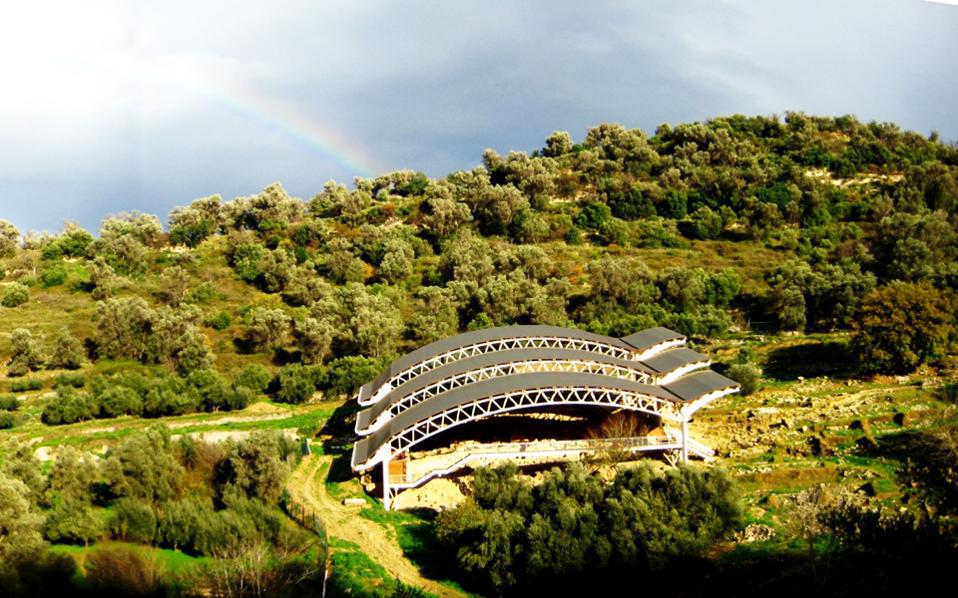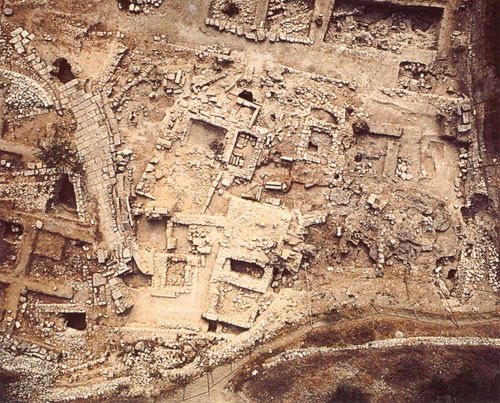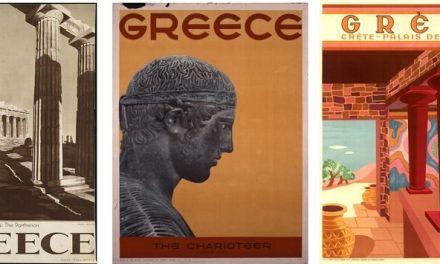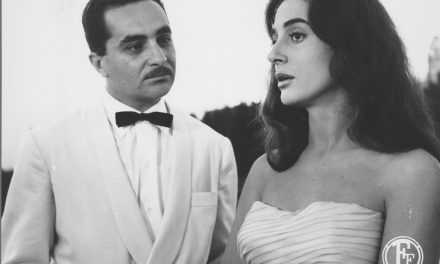Another emblematic museum directly linked to an archaeological site – like in the cases of Vergina, Delphi and Olympia – is expected to open this year in Greece: the Eleutherna Museum. Spread across 2,000 square meters, the museum’s space will be divided into display, storage and laboratory areas. Among the most beautiful artifacts going on display at the new venue are important inscriptions dating to about 500 BC, which were discovered last summer. The exhibits reflect the different periods during which the ancient city of Eleutherna flourished or was in decline, highlighting public and private life, religious practices as well as offerings to the dead. Among them are also items imported from other Mediterranean areas, a testament to the important role of commerce in the ancient world.
Located in the heart of Crete, some 30 kilometers from Rethymno, the archaeological site of Eleutherna where the new museum is due to open this Summer, is nestled in the slope of Mount Ida overlooking the sea. The view is breathtaking, with swaths of olives trees, carobs, oaks, plane trees, laurel bushes and walnut trees across the terraces of the hilly landscape. The heart of the ancient city of Eleutherna beat for a very long time, from the Neolithic era to the Byzantine period, when it vanished from the map. While time has erased most traces of the ancient city-state, when the Culture Ministry granted the University of Crete permission to excavate the site in 1985, no one could have imagined that it would uncover a palimpsest showing a constant human presence that dates back to 3000 BC.
 The key figure behind the excavations and the ambitious project to open a new museum on the site is Professor Nikos Stampolidis, a Greek archaeologist who splits his time between excavations in Crete and running Athens’ Museum of Cycladic Art. For over a quarter century, Greek excavation director Stampolidis and his dedicated team have uncovered hundreds of objects and remains of homes and unearthed the untold stories of the people buried some 2,800 years ago in the necropolis of Orthi Petra at Eleutherna on Crete. Among others, the excavation has revealed remains ranging from aristocratic warriors to very simple burials. One of his most touching finds was the grave of a 12-year-old boy, whose dog was buried in a small marked grave right beside him. One of the graves that contained the remains of several women from the same aristocratic family also contained ornate jewelry. The ancient cemetery of Eleutherna also provided the answer to the age-old question that had split Plato and Aristotle – whether the Greeks killed their prisoners of war. “These were not human sacrifices, but the justice of war, ritualistic revenge,” explained Stampolidis in an interview.
The key figure behind the excavations and the ambitious project to open a new museum on the site is Professor Nikos Stampolidis, a Greek archaeologist who splits his time between excavations in Crete and running Athens’ Museum of Cycladic Art. For over a quarter century, Greek excavation director Stampolidis and his dedicated team have uncovered hundreds of objects and remains of homes and unearthed the untold stories of the people buried some 2,800 years ago in the necropolis of Orthi Petra at Eleutherna on Crete. Among others, the excavation has revealed remains ranging from aristocratic warriors to very simple burials. One of his most touching finds was the grave of a 12-year-old boy, whose dog was buried in a small marked grave right beside him. One of the graves that contained the remains of several women from the same aristocratic family also contained ornate jewelry. The ancient cemetery of Eleutherna also provided the answer to the age-old question that had split Plato and Aristotle – whether the Greeks killed their prisoners of war. “These were not human sacrifices, but the justice of war, ritualistic revenge,” explained Stampolidis in an interview.
 Moreover, one of the most impressive observations about the site is the care taken by the archaeologists to preserve the natural environment, allowing visitors to take a mental leap back in time and imagine the location as it was when it was first settled – nestled in the protective embrace of the woodland.“We are interested in Eleutherna becoming a paradigm of how we can showcase ancient sites. You can’t hear passing cars, and, other than the shelter, all of our interventions are discreet, retaining the purity of the landscape. We used large rocks rather than cement to divert the flow of a stream, the electricity cables are all below ground, thanks to the Public Power Corporation, and all the steps are made of rock and earth. Almost everything here is made by hand, and the best part is that we – the archaeologists and the workers on the dig, which is funded by the University of Crete – did it ourselves,” says Stampolidis, who expects Eleutherna to attract several hundred thousand visitors a year. “Culture, education and tourism, they’re a triangle that can be made to spin faster…museums have come closer in the past 15 years to what they should be, houses for all the muses where you can spend time in a civilised way. But we can still do much more”.
Moreover, one of the most impressive observations about the site is the care taken by the archaeologists to preserve the natural environment, allowing visitors to take a mental leap back in time and imagine the location as it was when it was first settled – nestled in the protective embrace of the woodland.“We are interested in Eleutherna becoming a paradigm of how we can showcase ancient sites. You can’t hear passing cars, and, other than the shelter, all of our interventions are discreet, retaining the purity of the landscape. We used large rocks rather than cement to divert the flow of a stream, the electricity cables are all below ground, thanks to the Public Power Corporation, and all the steps are made of rock and earth. Almost everything here is made by hand, and the best part is that we – the archaeologists and the workers on the dig, which is funded by the University of Crete – did it ourselves,” says Stampolidis, who expects Eleutherna to attract several hundred thousand visitors a year. “Culture, education and tourism, they’re a triangle that can be made to spin faster…museums have come closer in the past 15 years to what they should be, houses for all the muses where you can spend time in a civilised way. But we can still do much more”.
Despite the excavation’s extraordinary success, Professor Stampolidis remains very humble. “If you are going to do this work, you are becoming a philosopher,” he says, “and you try, at least, to understand that you are just a small part of a speck of dust in oblivion.” When he first went to Eleutherna as a young man, he told himself that he would dig up all of Eleutherna before he retired. The hill must have heard him and laughed at his plans. Now that he is older, he is better at hearing what the hill has to say. It is no coincidence that Stampolidis chose two symbols for Eleutherna and the new museum. The first is a golden bee, because the team of archaeologists worked really hard for this dream to come true, but also because the worship of this particular insect was spotted there for the first time. He also chose a “shield” with a lion’s head, “to protect the ideas and values of this effort”.
Watch videos:Introduction to Orthi Petra (Archaeology TV) & Eleutherna on Crete: an Early Iron Age Site (by Metropolitan Museum of Art).
TAGS: ARTS | ENVIRONMENT | FESTIVALS | GLOBAL GREEKS | TOURISM














